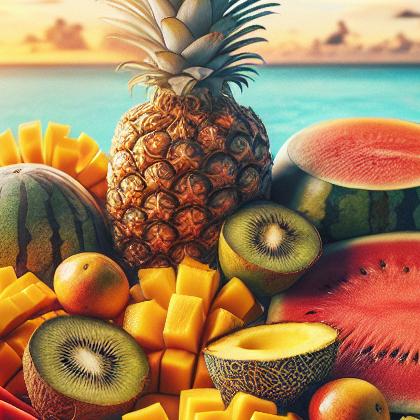Showing results for 'Tropical Fruits'
close
Tropical Fruits

This list of culinary fruits contains the names of some fruits that are considered edible in some cuisines. The word "fruit" is used in several different ways.[1] The definition of fruit for these lists is a culinary fruit, i.e. "Any sweet, edible part of a plant that resembles fruit, even if it does not develop from a floral ovary; also used in a technically imprecise sense for some sweet or sweetish vegetables, some of which may resemble a true fruit or are used in cookery as if they were a fruit, for example rhubarb."
Tropical Fruits Properties:
| Food Property | Type | Description |
|---|---|---|
| Flavor Profile | Sweet | Tropical fruits are known for their natural sweetness, making them a popular choice for desserts and snacks. |
| Sour | Some tropical fruits, like pineapple and kiwi, have a tangy and sour taste that adds a refreshing twist to dishes. | |
| Astringency | Some tropical fruits, such as mango and guava, can have a slightly astringent taste that leaves a dry sensation in the mouth. | |
| Texture | Moisture | Tropical fruits are often juicy and have high moisture content, giving them a refreshing and hydrating quality. |
| Nutritional Value | Micronutrients | Tropical fruits are rich in vitamins, minerals, and antioxidants that are essential for overall health and well-being. |
| Fiber | Many tropical fruits, such as papaya and mango, are high in dietary fiber, which aids in digestion and helps maintain a healthy gut. | |
| Color | Natural Pigments | Tropical fruits come in a variety of vibrant colors, thanks to natural pigments like carotenoids and anthocyanins. |
| Aroma | Volatile Compounds | Tropical fruits have a unique and fragrant aroma due to the presence of volatile compounds that give them their distinct smell and flavor. |
Food Pairing App - Version 1.2.0
